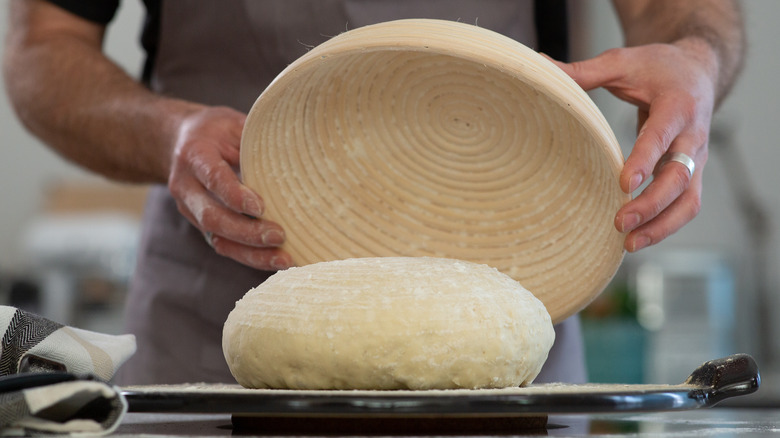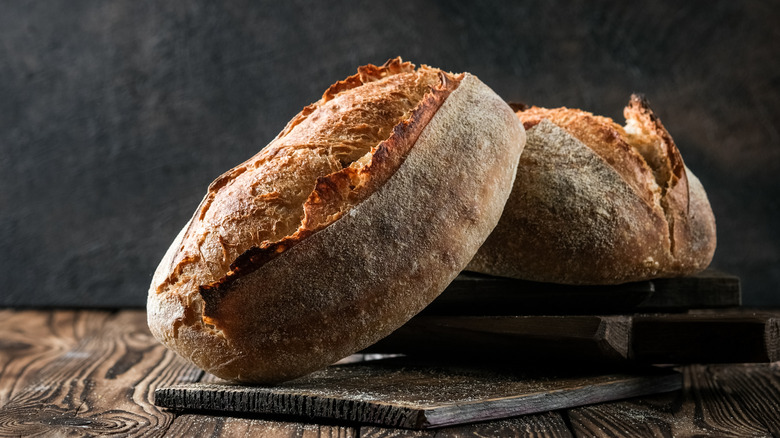The Sourdough Bread Dough Rule You Should Never Break
During the pandemic, learning how to make homemade sourdough bread seemed to top the list of new activities and hobbies people picked up to occupy their time. Baking can serve as a great stress reliever for some people, and mastering the art of crafting sourdough provided a fun challenge and a much-needed distraction from all the unfortunate news filling our social media and news feeds.
A LendingTree survey conducted in 2021 found that six out of 10 Americans started a new hobby in 2020 amid the height of the COVID-19 pandemic. The most popular pastime people took up was reading, followed secondly by baking or cooking.
Preparing sourdough bread became a sensation partly because it requires time and careful attention to detail, as noted by Taste of Home. That, and the finished product looks pretty on camera for sharing to social media feeds — and one thing people were sorely missing during the earliest parts of the pandemic were those personal connections. After all, we were spending so much time apart from friends and family.
If you are looking to throw your chef's hat in the sourdough bread ring, one key rule to always remember is the importance of dough hydration, or the water-to-flour ratio in your bread recipe (via Real Simple).
Hydration impacts fermentation
The higher the hydration in the dough, the better, according to Real Simple. The outlet even recommends aiming for a specific amount once you have the hang of baking sourdough and you're ready to hone your talents and experiment a bit. A good rule of thumb for creating the tastiest sourdough is achieving a 70% or higher level of hydration.
Sourdough baking blog Leavenly describes dough hydration as the "foundation of every sourdough recipe." It impacts everything in the baking process from fermentation time and shaping to texture. The higher the hydration percentage, the more rapid the fermentation of the sourdough. Though the blog advises that sourdough amateurs start by using 70% hydration and then gradually tweaking their percentages higher as they get a better handle on fermentation, it qualifies that there is no "right hydration," just what works best for the individual baker.
The Pantry Mama offers a simple guide on how to calculate hydration percentages for sourdough recipes. This outlet also suggests 70% as the sweet spot for beginners, noting that a higher hydration level can produce sourdough with a thinner, crispier crust as opposed to the chewier texture of lower hydration sourdoughs, among other benefits. Once you've got the hang of it, perform some trial runs with your percentages to find your own Goldilocks' version of sourdough bread.
Now, go forth and make the best rustic sourdough bread.

